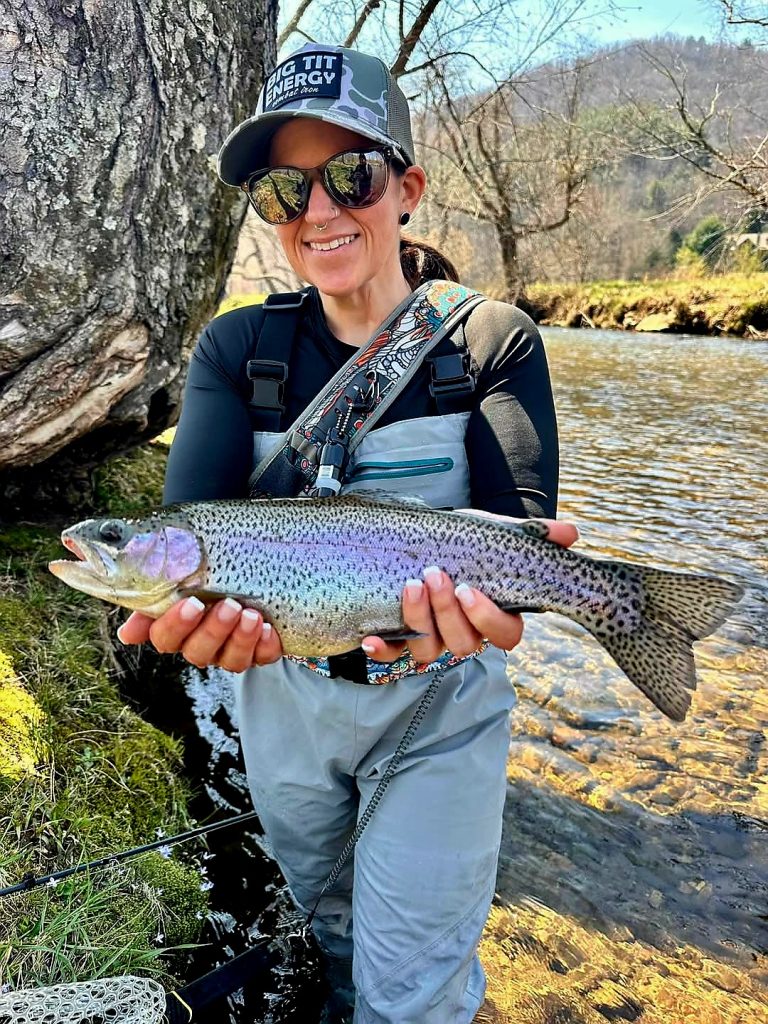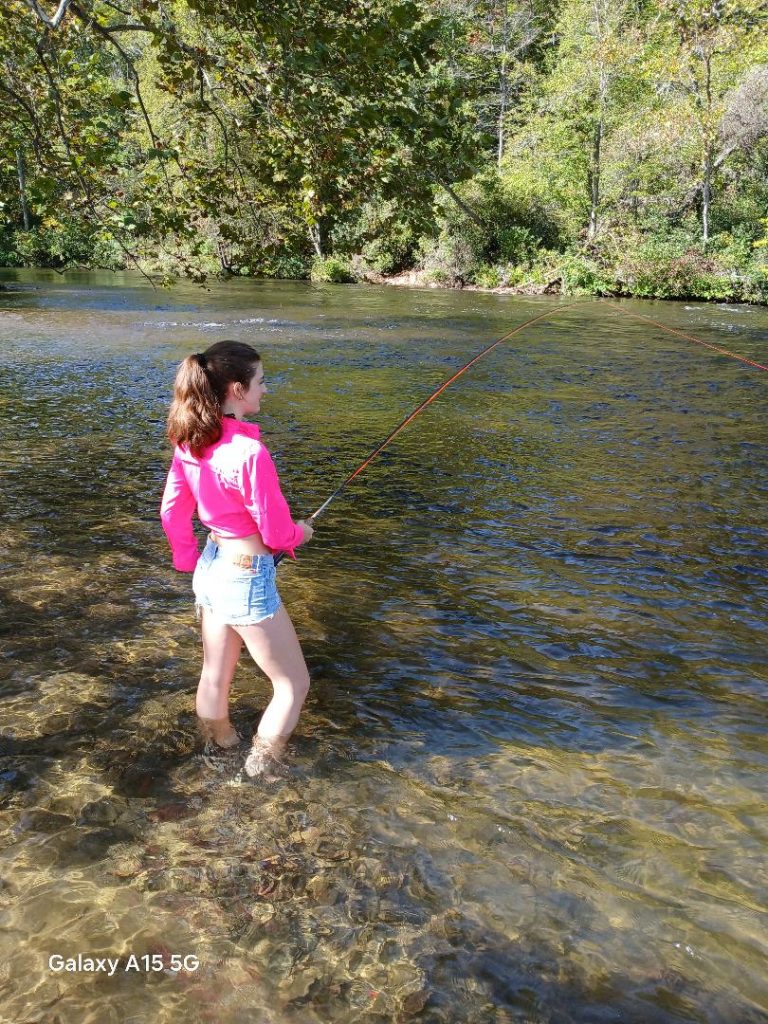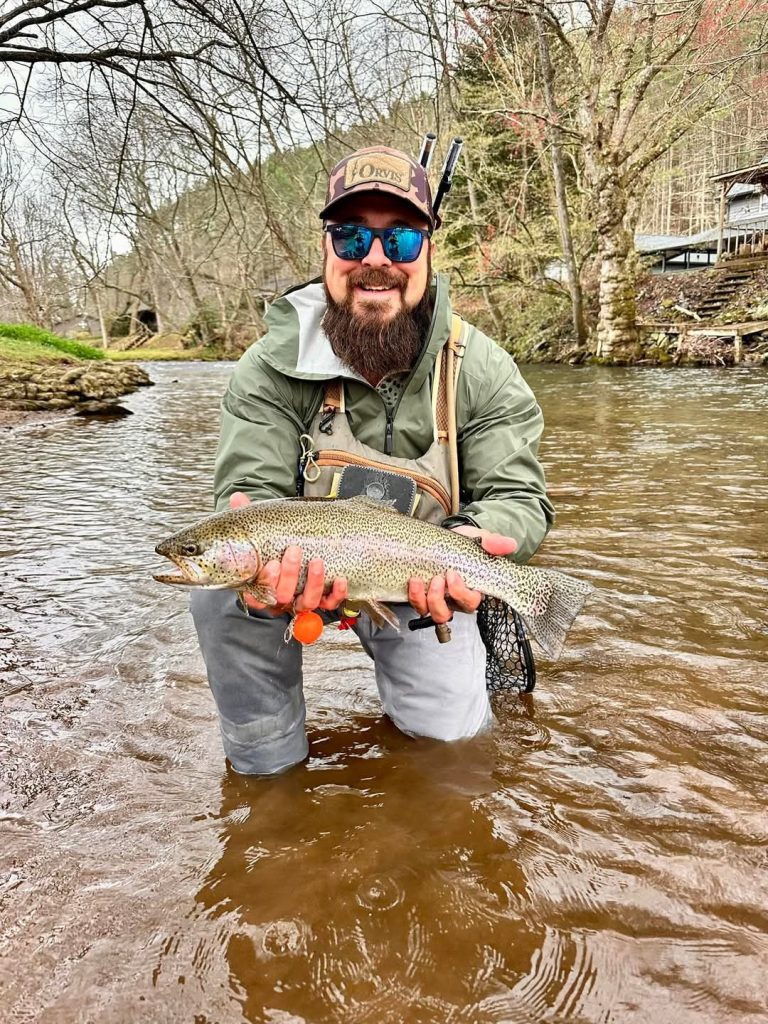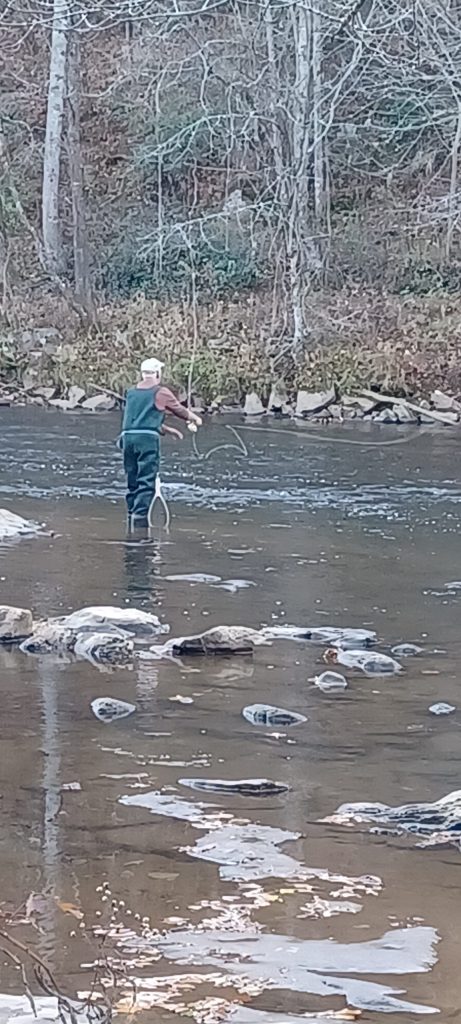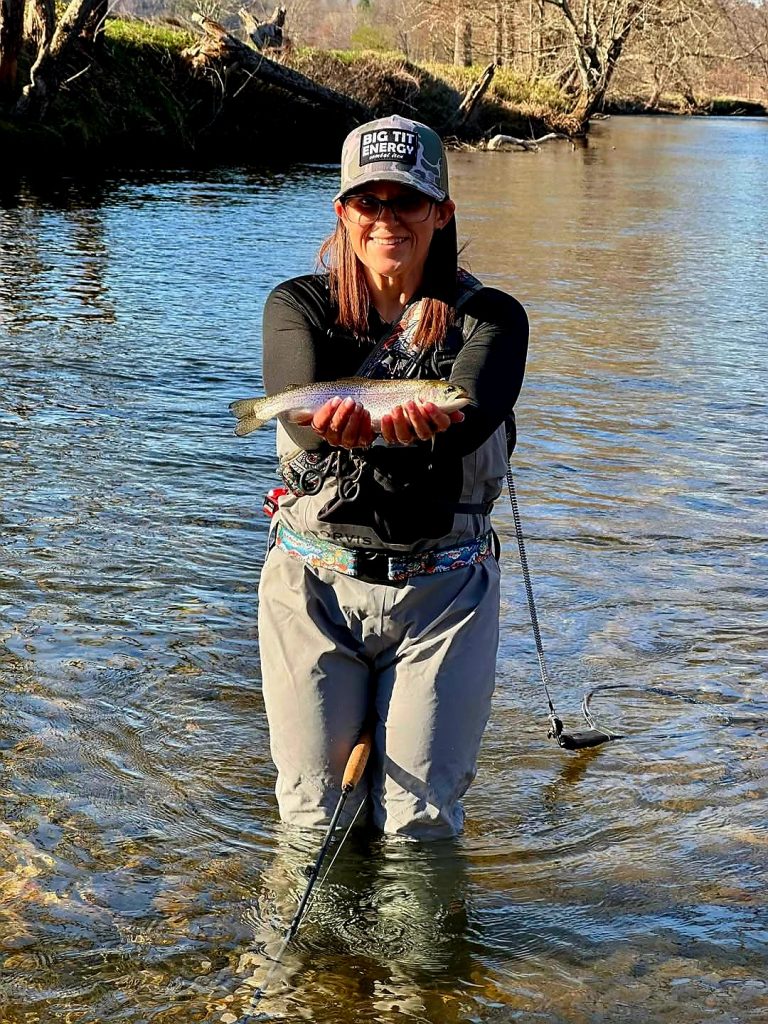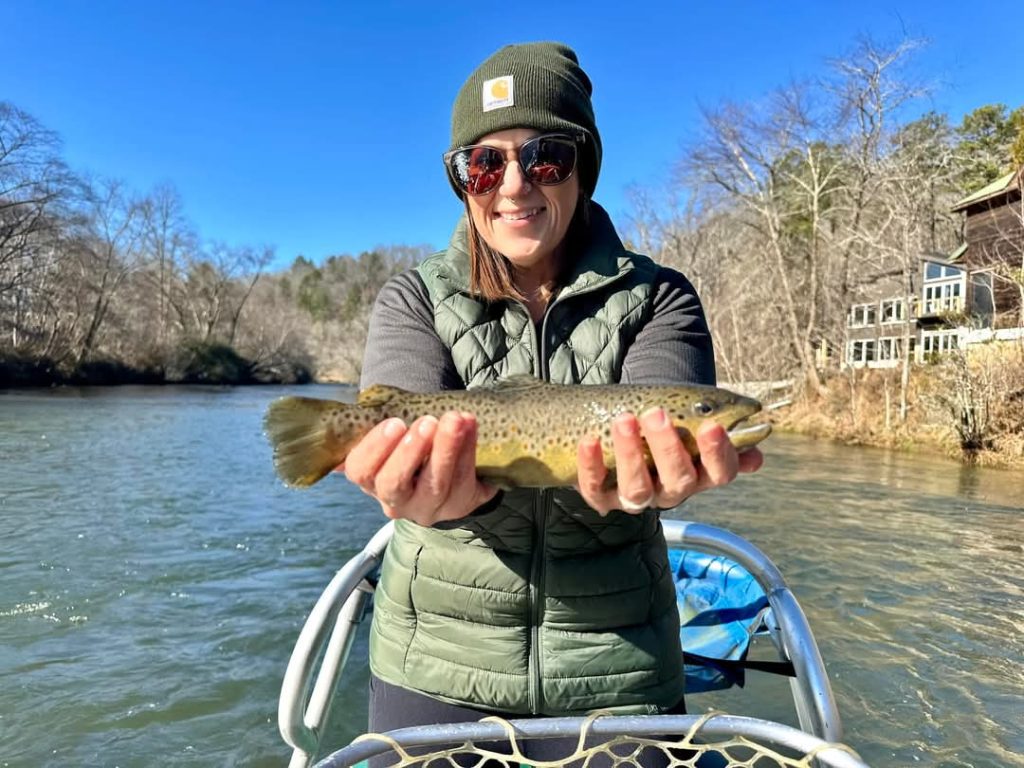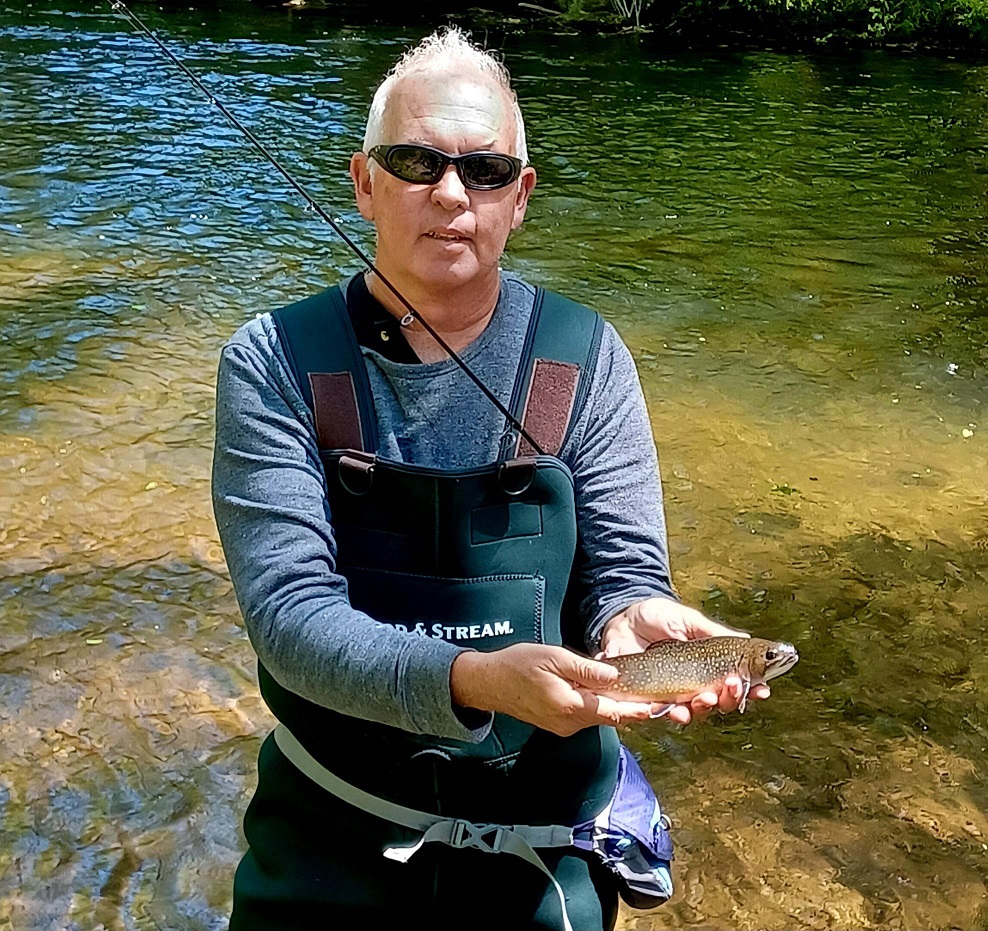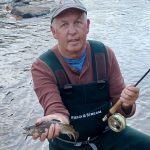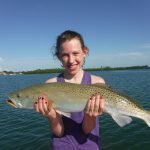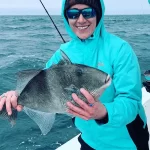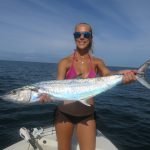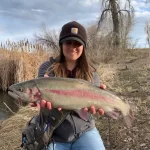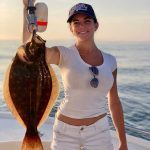Fishing the Tuckasegee River – a complete guide!
The Tuckasegee River, known locally as “the Tuck”, may be the premier trout fishing river in North Carolina. If not, it is certainly on the short list. The Tuckasegee River is accessible and heavily stocked. All three major trout species are present. It is not unusual for anglers to catch a trout “slam”, landing rainbow, brown, and brook trout in one day.
Call Capt Jim at (941) 371-1390 or e-mail captjimklopfer@gmail.com
The Tuckasegee River is a short 20 minute drive from Franklin North Carolina and is also fairly convenient to Asheville, Atlanta, and other cities. It is mostly associated with trout fishing, for good reason! However, other species can be caught, especially in the lower section near Fontana Lake. Smallmouth bass, rock bass, walleye, sunfish, and white bass inhabit the river.
The Tuckasegee begins as the east and west fork in the North Carolina mountains. Both sections are tailwaters, from Lake Glenville and Cedar Cliff Lake. The two merge in the town of Tuckasegee and flow north and west to Fontana Lake. The river is hatchery supported, except for two delayed harvest sections. Anglers fishing hatchery supported waters can use any legal tactic, including lures with treble hooks and live bait. There is a 7 fish limit with a 7″ minimum size.
The two Delayed Harvest sections get a lot of the fishing traffic, especially the Webster to Dillsboro stretch. This piece of river gets VERY heavily stocked! The Delayed Harvest stretch in Bryson City is also well stocked and very accessible. Anglers must use single hook lures and flies and no scented baits. It is catch and release only. This is from October 1 to the first Saturday in June. From then until September 30 hatchery supported rules take over.
Fishing the Tuckasegee River
The east and west forks are stocked a bit, but not nearly as heavily as the Delayed Harvest stretches. These sections also do not get a ton of pressure and there is not a ton of access. Shook Cove Rd offers a couple of good access spots. The west fork is mostly private. Once the forks merge, it gets better. 107 parallels the river. Starting at the launch and park at East Laport Park, access for waders and float boats is very good.
The dam in Cullowhee is a good spot for shore bound anglers. There are two ramps to launch, pick up, or portage around the dam. Wading spots are pretty good as well. There is another really nice park and launch at Locust Creek. Shortly down river, the Tuckasegee River goes under the 107 bridge. At this point the Delayed Harvest section begins.
The river from the bridge to Dillsboro is the Delayed Harvest section and gets a ton of pressure, It is very accessible as River Road parallels the river with many pullouts. It also is heavily stocked. Wading is good as long as the dam is not pumping. There is another launch in Webster. This stretch of river offers very good fishing, especially in the fall after they stock and the crowds are gone.
Safety first on the Tuckasegee River
A word about safety here. The Tuck is a big river and when Duke discharges, it gets strong and fast. The section from Dillsboro to Bryson City really should only be floated, wading is tough. A PFD should be worn if wading. There is another Delayed Harvest section in Bryson City. Anglers can access and wade from the nice downtown island park. There are several ramps from Dillsboro to the lake. Here is an excellent map of ramps on the Tuckasegee River with distances between ramps.
Water discharges from the dam will obviously dictate water levels. This in turn affects the approach anglers will take when fishing. Here is a Tuckasegee River water release schedule from Duke Energy.
Here is a link to USGS site showing water levels and volume for the Tuckasegee River.
Tuckasegee River fishing techniques
While the majority of anglers choose to fly fish the Tuckasegee River, spin fishing can certainly be employed as well. Treble hooks can be used on lures in the hatchery supported waters, as well as live bait.
Fly fishing on the Tuckasegee River
Fly fishing is the predominant technique used on the Tuckasegee River. A 5wt 9 foot rod is a good all round choice. Anglers can certainly go up to a 6wt, it is a big river with the chance to catch some large fish. A 9′ 5x leader works well in most situations. Again, anglers can adjust depending on the conditions.
The most productive rig is a two fly dropper under a strike indicator. Sub surface flies produce best in this river. Nymphs in size 14 to 18 including prince, pheasant tail, and hares ear are all reliable producers. Egg patters work well, with peach being an excellent color. “Junk” flies such as mop flies and squirmy wormies fool stocker trout. A Pat’s rubber leg is a good attractor fly.
Anglers dry fly fishing can catch fish on the Tuck. Yellow Sally, caddis, coachman, and hopper patterns will all work. Hatches are not as prevalant here as on classic western streams. Anglers seeking larger fish will do well casting a streamer pattern. Wooly buggers, Clousers, muddlers, and other streamers will produce fewer bites, but larger fish.
Spin fishing on the Tuckasegee River
Anglers spin fishing in the Tuckasegee River certainly catch plenty of fish. The top artificial lure is the inline spinner. Spinners that weigh 1/8 ounce to 1/16 ounce work very well. Gold blades with black or brightly colored bodies are a good place to start. Spinners are also very easy to use. The best technique is to cast across the current and retrieve it back in using a slow, steady pace. Rooster Tail markets a single hook spinner for use in the Delayed Harvest section.
Trout magnets are another popular and effective lure. This is basically a tiny jig fished under a float. This is very similar to what the fly anglers use, a fly under a strike indicator. Bright colors generally work best. These work best in the deeper pools and runs. The idea is to set the float so that the jig just bounces off the bottom. It has a single hook and works well for catch and release fishing.
Plugs are a good choice for anglers seeking a trophy fish. They also produce in the lower section of the river where smallmouth bass are more numerous. A small Rapala jerkbait is a good choice. The Husky Jerk size 4 in the rainbow trout pattern works well. Gold is also productive. They cant be used in the Delayed Harvest sections unless the treble hooks are removed and replaced with one single hook.
Anglers can use bait as well. A nightcrawler fished under a float is deadly. A split shot will be needed to get the bait down. Prepared trout baits and eggs are effective and convenient, no need to keep it alive. These are better options than corn, which are not good for trout.
Other fish species
While the vast majority of anglers fish the Tuckasegee in search of trout, there are other species that are available. Smallmouth bass are found throughout the river, though the closer to Fontana Lake one fished, the better the chance for smallmouth. Rock bass are caught in the slower pools in the warmer months. The same can be said for the several varieties of panfish. Walleye and white bass will migrate up the river, particularly in spring. While not many anglers target them, they are a possibility.
In conclusion, this article on fishing the Tuckasegee River will help anglers catch fish in this terrific North Carolina trout fishery!
